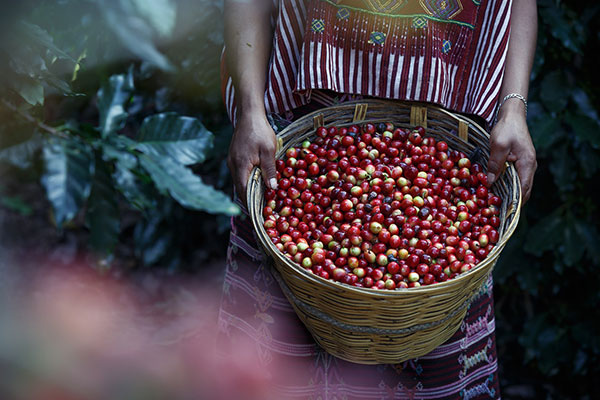 There has been increasing buzz about fair trade in recent years, and it is spoken of in a way that upholds its stance as an ethical buying choice. This begs several questions, the first and foremost being, what does fair trade mean?
There has been increasing buzz about fair trade in recent years, and it is spoken of in a way that upholds its stance as an ethical buying choice. This begs several questions, the first and foremost being, what does fair trade mean?
Fair trade, according to the International Market Bureau, is a social movement that focuses on “international development, social justice, environmental sustainability, and equitable economic returns.”1 While it is still considered a niche market, fair trade is becoming increasingly popular, showing substantial growth in recent years.
In search of fair trade food ingredients?
Let Prospector help! Find technical data, request samples, contact global suppliers, and more!
Search fair trade ingredients now
Fair trade food trends
Although fair trade goods represented less than 0.1 percent of all goods traded globally as of 2010, the market grew 27 percent from 2009 to 2010 to reach a global retail market value of $5.8 billion. Along with this growth, well-known corporations such as Ben & Jerry’s, Theo chocolate, and Patagonia active/outdoor are committed to using fair trade products.2
While the exact criteria and standards for what is considered fair trade differs somewhat across organizations that promote fair trade, The World Fair Trade Organization cites 10 Principles of Fair Trade:3
- Opportunities for disadvantaged workers
- Transparency and accountability
- Fair trade practices
- Fair payment
- No child labor or forced labor
- No discrimination; gender equality; and freedom of association
- Good working conditions
- Capacity building
- Promote fair trade
- Respect for the environment
Many types of products are available through fair trade channels, including:
- Chocolate
- Coffee
- Nuts and oils
- Tea
- Bananas and other produce
- Rice
- Vanilla
- Herbs and spices
- Sugar
- Gum
- Cereal
- Gold
- Cotton
- Beauty products
- Clothing
- Flowers
- Soccer balls4
Fair trade products typically carry some type of certifying label; however, there is some inconsistency in the meaning of certification from various fair trade organizations. The World Fair Trade Organization and Fairtrade America (a subgroup of Fairtrade International) both have their own labeling criteria, as do other organizations.
Fair Trade USA and Fair for Life both have certification processes that they use based on their individually published standards to certify specific products as fair trade. Each of these organizations has their own mark that a product may display if certification criteria are met.
The World Fair Trade Organization and the Fair Trade Federation are both considered membership groups, which means that, in exchange for payment of dues, companies can be part of events, gatherings, and promotion of fair trade. These membership organizations also have their own labels and marks to indicate companies that belong to the group.5
There is some criticism of fair trade certification, as products can be certified even if they do not address fair trade issues at every stage of a product’s production and distribution. Futurity Earth and Environment explains that there are several ways that fair trade certification might carry less meaning than a consumer expects:6
- Only a small subset of materials used in the product might be obtained through sustainable sourcing practices
- Not all sustainable sourcing practices include considerations for factors such as health, energy, infrastructure, climate change, gender, education, and poverty
- Nearly all sustainable sourcing practices focus only on first-tier suppliers without consideration to how materials came to be available to those first-tier suppliers
- Sustainable sourcing practices may only pertain to one product line offered by a company, while their other products do not meet fair trade standards
If the market demographic of a company values fair trade, the best places to begin are investigating which certification or membership best aligns with the company’s mission and vision, and subsequently sourcing products that match up with those criteria and standards.
There are several options for sourcing fair trade materials, products, and ingredients. Several fair trade organizations provide sourcing or wholesale programs to help companies obtain quality fair trade items. The Fairtrade Foundation and Fair Trade Federation both have wholesale sourcing programs for just that purpose.7, 8
Further food trend reading:
- Snack Food Trends Focus on Health, Portability & Variety
- Probiotic Trends: What’s Shaping and Driving the Market
- Formulating with Stevia: Facts, Trends & Tips
- Beverage Trend Watch: Lower Sugar Content and Botanical Extracts
References and resources
- International Markets Bureau: Market Analysis Report April 2012 [PDF]
- End Slavery Now: Slave Free Companies
- World Fair Trade Organization: 10 Principles of Fair Trade
- Fairtrade Foundation: Buying Fairtrade
- Fair Trade Winds: Guide to Fair Trade Labels
- Futurity Earth and Environment: Product labels like ‘Fair Trade’ mean less than you’d think
- Fairtrade Foundation: Fairtrade Sourcing Programs
- Fair Trade Federation: Find a Wholesale Supplier
The views, opinions and technical analyses presented here are those of the author or advertiser, and are not necessarily those of ULProspector.com or UL Solutions. The appearance of this content in the UL Prospector Knowledge Center does not constitute an endorsement by UL Solutions or its affiliates.
All content is subject to copyright and may not be reproduced without prior authorization from UL Solutions or the content author.
The content has been made available for informational and educational purposes only. While the editors of this site may verify the accuracy of its content from time to time, we assume no responsibility for errors made by the author, editorial staff or any other contributor.
UL Solutions does not make any representations or warranties with respect to the accuracy, applicability, fitness or completeness of the content. UL Solutions does not warrant the performance, effectiveness or applicability of sites listed or linked to in any content.



Leave a Reply or Comment